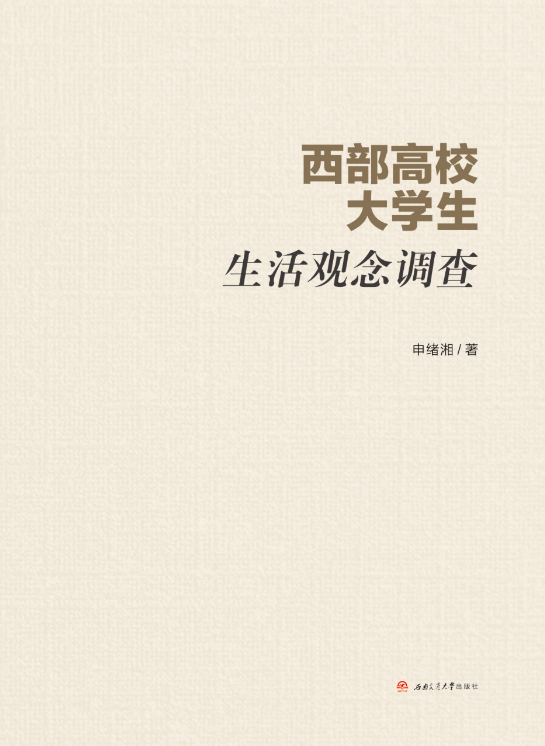-
 16—17世纪西欧人眼中的俄罗斯
16—17世纪西欧人眼中的俄罗斯作者:朱川豫 严学玉 付华权 姜海阳
本书以俄语、英语的文献、专著和论文为主要参考资料,同时吸收了国内外现有的研究成果。作者从西欧人俄罗斯观形成的基础、形成的过程,以及西欧人眼中的俄罗斯形象三方面入手,对16-17世纪西欧人对俄罗斯认识的主要内容和观点做了介绍和评价,亦探讨了西欧人早期对俄罗斯认识的观点对双方产生的影响。本书的研究属于西欧与俄罗斯交往史中观念认识问题的范畴。目前国内学术圈对该问题的研究还较为薄弱,少有学者做过深入研究。研究西欧与俄罗斯交往史中的观念认识问题有助于把欧俄关系史的研究引向深入。因此,本书的研究具有一定的学术价值。
-
 理论·实践·经验——贵州师范大学党的群众路线教育实践活动成果选集
理论·实践·经验——贵州师范大学党的群众路线教育实践活动成果选集作者:韩卉, 主编
本书是教育工作者实践群众路线活动心得论文集。全书选取的论文以党的群众路线教育实践活动为契合点,全面探讨党的群众路线的历史发展、理论范畴与实践经验,紧紧围绕高校党的群众路线教育实践活动这一主题开展多层面、多角度的调查研究。全书坚持以历史唯物主义为指导,注重历史、逻辑与现实的统一,理论与实践相结合;既有宏观的思考,也有具体问题的分析;既重视对党的重要文献的解读,又突出对实证调查材料的阐释。
-
 大潮涌动:社区共治的乌当创新与借鉴
大潮涌动:社区共治的乌当创新与借鉴作者:佘龙, 郝建, 著
推进国家治理体系和治理能力现代化是十八届三中全会确定的全面深化改革的总目标,是历史的潮流。社会治理要求树立多元共治的新理念,形成多元共治的善治格局。社区共治是整个社会治理体系中非常重要一环。本书拟以贵阳市乌当区在社区共治问题为主线,挖掘乌当区在社区共治方面的创新亮点,探析社区共治的乌当创新的发展现状与存在的问题,提出社区共治的乌当创新的路径选择,为我国、社会治理、社区共治提供有益的理论与实践的借鉴。
图书分类
Book classification- 本书为马克思主义理论一级学科“少数民族大学生思想政治教育”——网络时代大学生:生活形态·就业观念·信仰等系列课题研究成果。该书通过问卷调查的方式,对西部地区10所高校(涵盖985、211、普通本科高校)的余八千名学生进行了调查研究,呈现了西部大学生的时间观、学习观、集体观、环保观、公德观等生活观念,并就部分观念与之相关的行为进行了联合分析。书中着重探讨了网络环境对大学生信仰的影响,对生活观念不同的...查看更多
- 自 序
近些年,关于大学生思想动态和生活形态的调研成果非常丰富,既有全国性调研,也有聚焦省份或者学校的地方性调研,还有专注于学习情况、就业情况、创业情况、时代精神等的专题调研。这些都为高等教育管理者和高校一线思想政治工作者,提供了诸多有益的参考。
然而,对于一位长期工作在西部高校的高等教育管理者而言,在学生工作的实践中,我总感觉上述调研虽然令我获益匪浅,但还不...查看更多
- 一、成长背景的变化
这一代大学生成长于改革开放年代,这是一个和平稳定的年代、一个经济大发展的年代,这是一个社会转型的年代,也是一个社会急剧变化的年代。
这里我们只讨论大学生成长过程中可以直接接触到的社会环境,并且在整体的水平加以讨论。
首先是家庭环境。其一,得益于改革开放和经济发展,大部分大学生所在家庭的经济收入水平均有不同程度的提高,在上大学前,家庭几乎不存在温饱问题,家...查看更多
-
Contents
Chapter 1 Introduction 001
section 1 Changes in growth background 001
section 2 Framework sha...查看更多 - 申绪湘,吉首大学研究员、生物资源与环境科学学院党委书记,马克思主义学院兼职教师。主要从事高等教育管理研究。主持省部级课题10项;获湖南省教学成果一等奖1项、省教育科学研究成果一等奖1项





